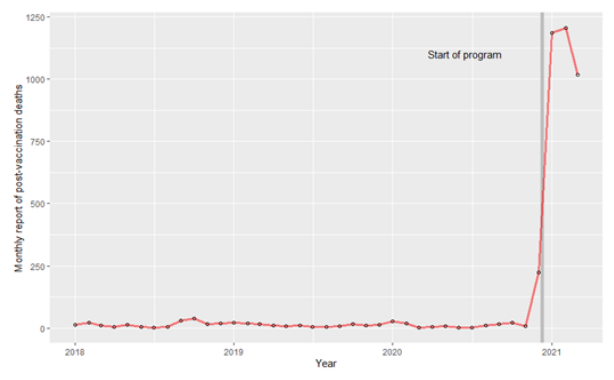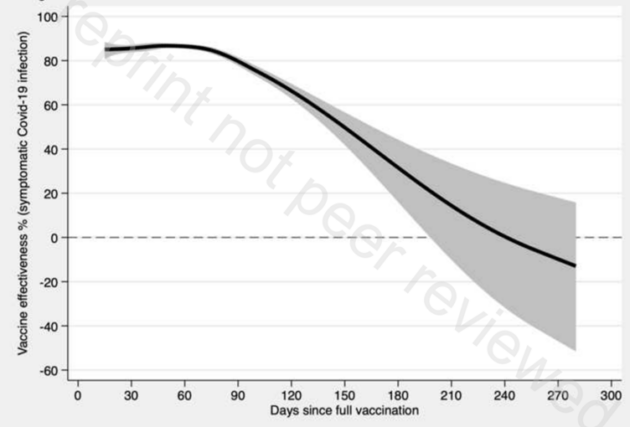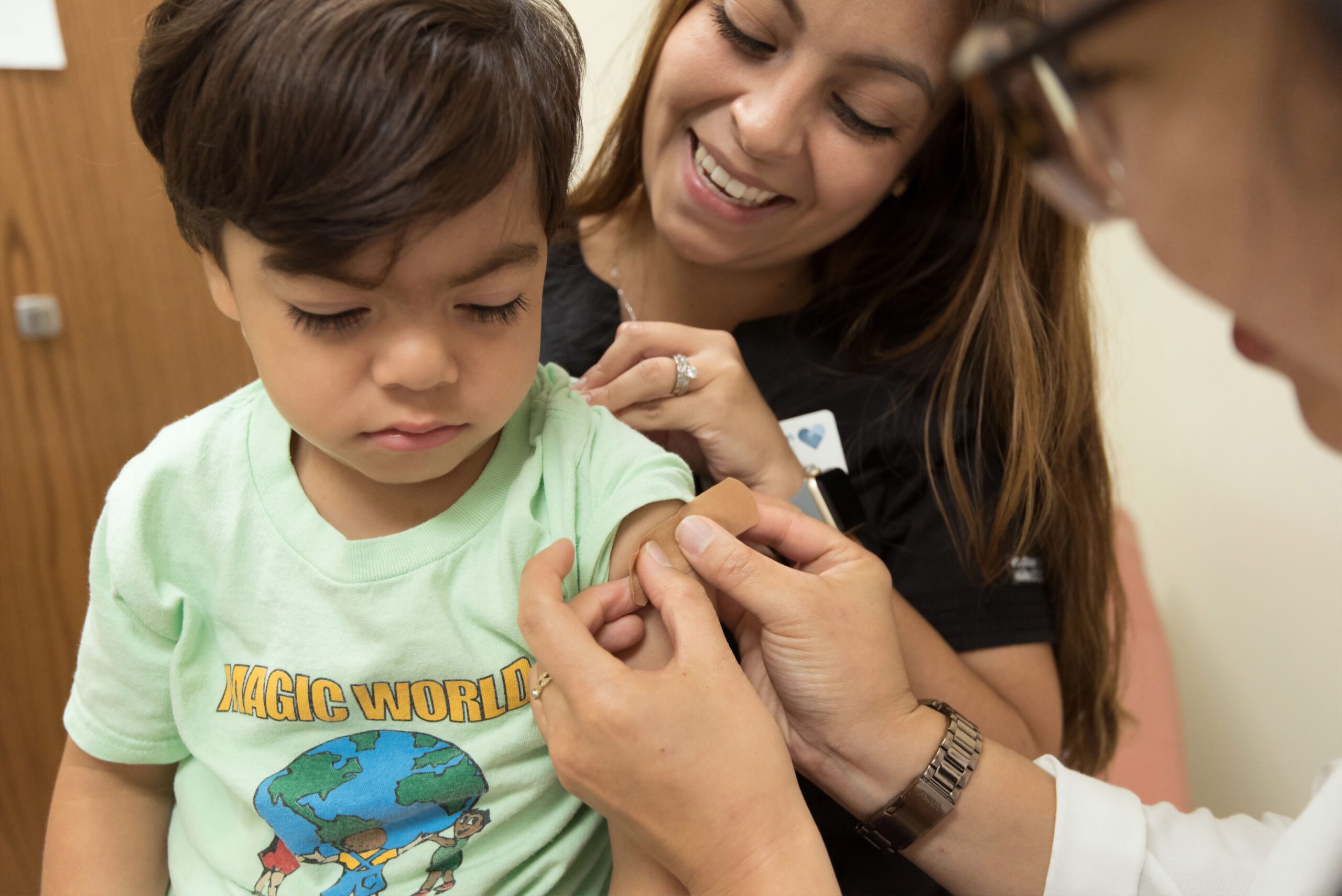Gerhard Sundborn
Epidemiologist, University of Auckland, Department of Pacific Health, New Zealand
Simon Thornley
Epidemiologist/Public Health Physician, University of Auckland, Section of Epidemiology and Biostatistics, New Zealand
Rupert Scott
General Practitioner, Whangarei, New Zealand
René de Monchy
General Practitioner and Psychiatrist, Tauranga, New Zealand
Matt Shelton
General Practitioner, Wellington, New Zealand
Byram Bridle
Professor of Viral Immunology, University of Guelph, Canada
covidplanb.co.nz
To date, a decision to rollout the vaccine to children aged 5 – 11 years has not been made. We question the idea that vaccine mandates are a “no-brainer” particularly for children. Specifically, we believe that for children, emerging data indicates that such a policy will lead to more harm than good. We urge a precautionary approach be taken and that any plans for the vaccination of children be delayed for three important reasons.
Long-term safety and efficacy of the covid-19 vaccine is unknown:
The first and most crucial point is that the long-term safety and efficacy data from the trial will not be available until 2023. Although short-term safety and efficacy data looks promising, this has only been tested in a small cohort of children, with 1,131 children receiving the vaccine at the time of writing.6 This means that detected adverse effects would only be those which are relatively common, and side effects, such as excess clotting that have led to the withdrawal of the AstraZeneca vaccine, for example, from many countries would not have been detected.7 This vaccine is one of the fastest to ever be developed and rolled out, taking less than one calendar year. Before this, the fastest approval was four years. Most take an average of ten to fifteen years from development to approval for clinical use.8
When we reflect on the 2009 swine flu pandemic a similar scenario occurred where the hastened development and approval of a vaccine took an astonishing 5-6 months once the new virus was identified.9 The vaccine was then administered widely, until 2011-12 when long term safety and efficacy data were available – from which studies indicated that the vaccine caused unacceptable rates of narcolepsy.10 This resulted in over a billion-dollars’ worth of these vaccines being destroyed.11-13
Another more distressing example occurred in the 1976 swine flu outbreak at the US Fort Dix military base. The infection caused one death and 230 soldiers to become ill. This led to a hastily developed vaccine that was rolled out to approximately 22% of the US population. The resulting vaccine caused over 500 cases of paralysis and 25 deaths. The vaccine was far worse than the virus itself and observers thought that the government response was too fast, with important safety considerations overlooked.14
In the US there has been a dramatic increase observed in US government vaccine injury reports as evidence of vaccine harm. The 100-fold increase in post-vaccine deaths reported in temporal association to the rollout of the Covid-19 vaccines in late 2020 is perhaps best shown in the plot below.

Image Credit: https: covidplanb.co.nz
Such a rapid increase in reports should be cause for concern, particularly when the development and clinical testing of the vaccines has been so truncated, and adverse effects from wide scale vaccination are unknown.15 Conventional epidemiological knowledge confirms that medical adverse event databases generally under-report safety signals.
In a United States study that compared augmented electronic monitoring of health records in the thirty days post-vaccination, with prompting of clinicians to report likely vaccine-related events to usual practice, the augmented system resulted in a 30-fold increase in vaccine-related incident reporting, compared to historical periods. 16
When considering whether the spike in adverse event reporting is related to increased rates of vaccination or harm due to the vaccine, statistical tests carried out by Rose et. al. indicate clearly that the deaths are clustered around the time immediately after the event, in a manner which is incompatible with what would be expected if such deaths were occurring due to background mortality risks (P < 0.001).17
Efficacy of the Pfizer covid-19 vaccine is reported to be 52% after the initial dose and 95% after the second dose which has been taken from interim data.18 However, these claims have been questioned by researchers in Israel who have seen a far lower than expected decline in cases following vaccination of over 75% of their elderly population. Rather than a 52% decline in cases they have seen a significantly lower reduction in cases by 33%.19 Further, the protection against new variants of the virus remains unknown. A study recently published in the Lancet has found being fully vaccinated does not reduce any transmissibility once infected with the virus, compared to unvaccinated infected people.20
Very recently published evidence from overseas, where the vaccine rollout has occurred earlier than in New Zealand shows that vaccines are not resulting in enduring and lasting protection from the virus. A preprint Swedish cohort study (1.6 million people) which compares the risk of Covid-19 infection in vaccinated and unvaccinated people throughout the Covid-19 vaccination roll-out in the country from the 4th of January to the 4th of October 2021.21 Analysis of those who had taken the Pfizer vaccine showed that the effectiveness at preventing symptomatic infection waned from initial high levels to 47% in the period 121-180 days after the vaccine to no convincing effect beyond day 211 post-vaccination (23% reduction; 95% confidence interval, -2 to 41, P = 0·07), compared to unvaccinated people.
This modelled decline in vaccine effectiveness is illustrated in the figure below. Such an effect was observed for all Covid-19 vaccinations used in the country, and observed for more severe health outcomes such as prevention of Covid-19 hospitalisation and death.

To be continued…
References
6. Pfizer. Pfizer-BioNTech Announce Positive Topline Result of Pivotal COVID-19 Vaccine Study in Adolescents. [Internet] Pfizer. 31 March 2021. [cited 9 July 2021] Available from: https://www.pfizer.com/news/press-release/press-release-detail/pfizer-biontech-announce-positive-topline-results-pivotal
7. Dean G, Schuster-Bruce C. Sweden joins Germany, France and 15 other countries in suspending AstraZeneca’s vaccine over possible side effects. [Internet] Business Insider Australia. 16 March 2021. [cited 9 July 2021] Available from: https://www.businessinsider.com.au/astrazeneca-covid-vaccine-countries-suspend-denmark-thailand-batch-blood-clots-2021-3?r=US&IR=T
8. The History of Vaccines. Vaccine Development, Testing, and Regulation. [Internet] The History of Vaccines. 17 January 2018. [cited 9 July 2021] Available from: https://www.historyofvaccines.org/content/articles/vaccine-development-testing-and-regulation
9. WHO. Pandemic influenza vaccine manufacturing process and timeline. [Internet] WHO. 6 August 2009. [cited 9 July 2021] Available from: https://www.who.int/news/item/06-08-2009-pandemic-influenza-vaccine-manufacturing-process-and-timeline
10. Stranden AL. Norwegian study links flu vaccine to narcolepsy risk [Internet]; Science Norway, 28 March 2017; [cited 2020 Dec 17]. Available from: https://sciencenorway.no/forskningno-norway-vaccine/norwegian-study-links-flu-vaccine-to-narcolepsy-risk/1444067
11. Conner R. Germany to destroy expensive, unwanted swine flu vaccine [Internet]; Deutsche Welle, 17 August 2011; [cited 2020 Dec 17]. Available from: https://www.dw.com/en/germany-to-destroy-expensive-unwanted-swine-flu-vaccine/a-15324186
12. O’Callaghan T. Some 40 million doses of H1N1 vaccine to be destroyed [Internet]; Time, 1 July 2010; [cited 2020 Dec 17]. Available from: https://healthland.time.com/2010/07/01/some-40-million-doses-of-h1n1-vaccine-to-be-destroyed/
13. Independent. Netherlands destroying 17 million swine flu vaccine doses [Internet]; 18 September 2011; [cited 2020 Dec 17]. Available from: https://www.independent.co.uk/life-style/health-and-families/netherlands-destroying-17-million-swine-flu-vaccine-doses-2038287.html
14. Khamsi, Roxanne. How we will know when coronavirus vaccine is ready. [Internet] National Geographic. 1 July 2020. [cited 2021 July 7] Available from: https://www.nationalgeographic.com/science/2020/06/how-we-will-know-when-coronavirus-vaccine-is-ready-cvd/
15. Seneff et al “Worse Than the Disease? Reviewing Some Possible Unintended Consequences of the mRNA Vaccines Against COVID-19” Vol. 2 No. 1 (2021): Epidemic NCDs https://www.ijvtpr.com/index.php/IJVTPR/article/view/23
16. Meghan A. Baker, David C. Kaelber, David S. Bar-Shain, Pedro L. Moro, Bob Zambarano, Megan Mazza, Crystal Garcia, Adam Henry, Richard Platt, Michael Klompas, Advanced Clinical Decision Support for Vaccine Adverse Event Detection and Reporting, Clinical Infectious Diseases, Volume 61, Issue 6, 15 September 2015, Pages 864–870, https://doi.org/10.1093/cid/civ430
17. Rose J. A Report on Myocarditis Adverse Events in the U.S. Vaccine Adverse Events Reporting System (VAERS) of the COVID-19 Messenger Ribonucleic Acid (mRNA) Biologicals. Science, Public Health Policy, and The Law. Volume 2:59-80. May, 2021.
18. Mahase E. Covid-19: Pfizer vaccine efficacy was 52% after first dose and 95% after second dose, paper shows BMJ 2020; 371: m4826 doi:10.1136/bmj.m4826
19. Mahase E. Covid-19: Reports from Israel suggest one dose of Pfizer vaccine could be less effective than expected. BMJ. 2021 Jan 22;372:n217. doi: 10.1136/bmj.n217. PMID: 33483332
20. Singanayagam A, Hakki S, Dunning J, Madon KJ, Crone MA, Koycheva A, et al. Community transmission and viral load kinetics of the SARS-CoV-2 delta (B.1.617.2) variant in vaccinated and unvaccinated individuals in the UK: a prospective, longitudinal, cohort study. Lancet Infect Dis 2021 Published Online October 28, 2021 https://doi.org/10.1016/ S1473-3099(21)00648-4
21. Nordström, Peter and Ballin, Marcel and Nordström, Anna, Effectiveness of Covid-19 Vaccination Against Risk of Symptomatic Infection, Hospitalization, and Death Up to 9 Months: A Swedish Total-Population Cohort Study. Available at SSRN: https://ssrn.com/abstract=3949410 or http://dx.doi.org/10.2139/ssrn.3949410
Please share this article so that others can discover The BFD.

